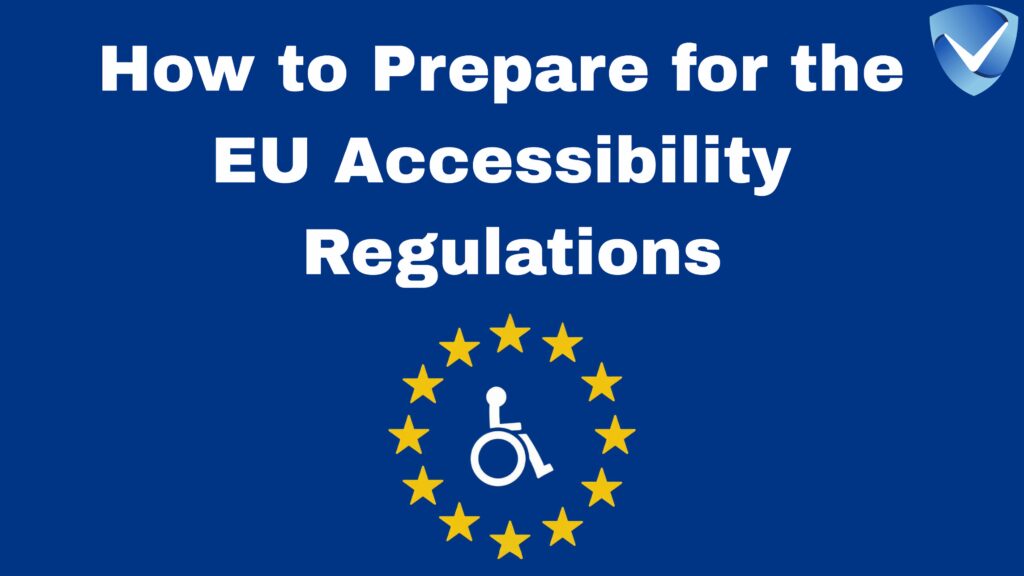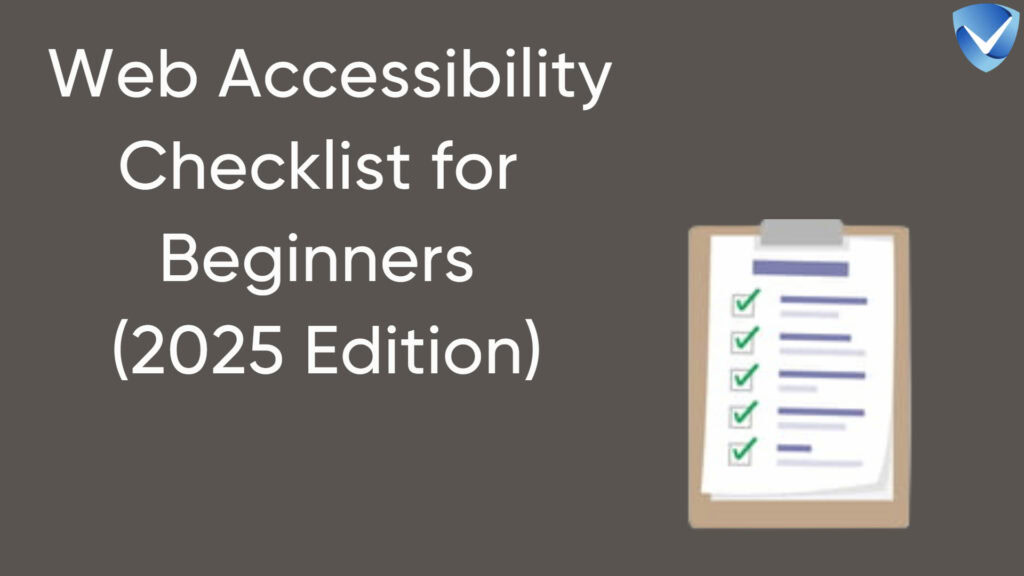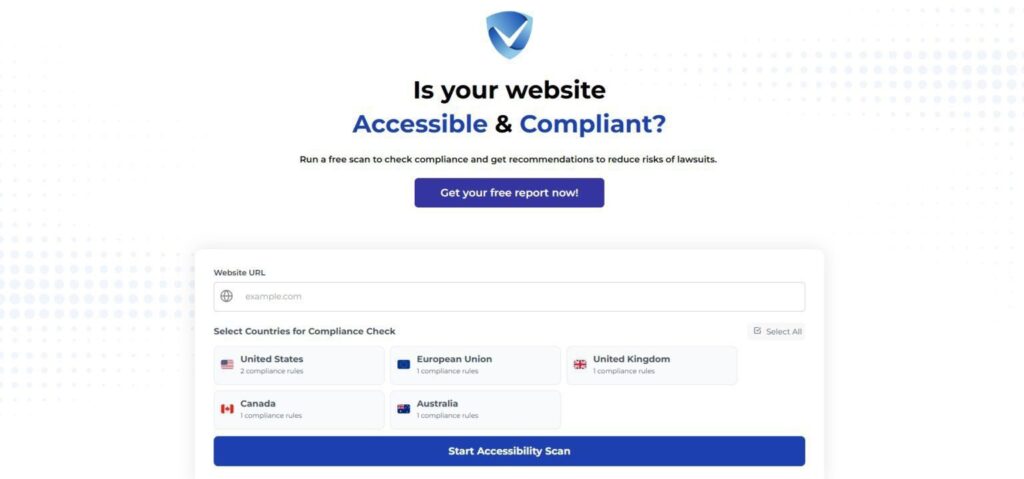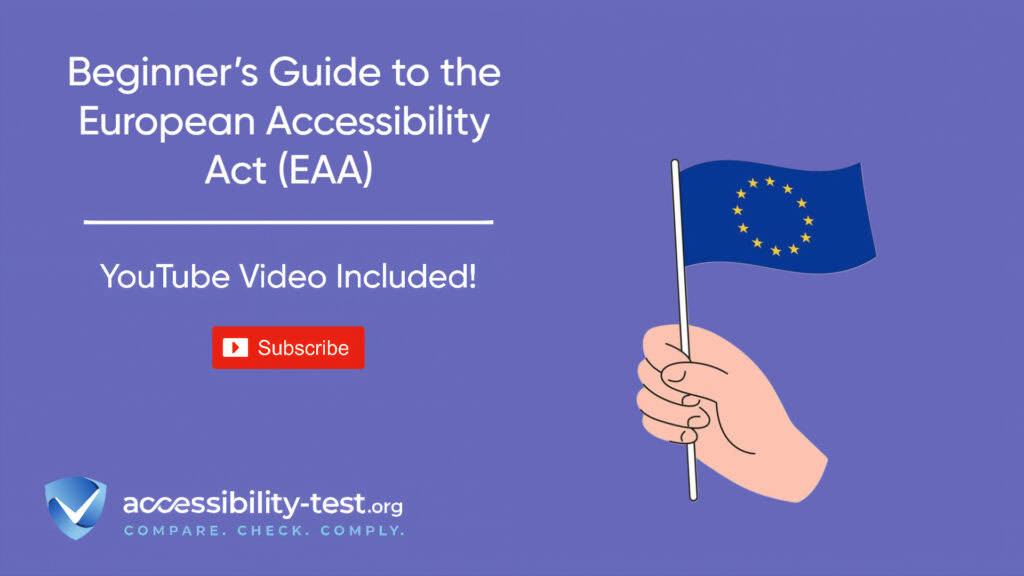What Is the European Accessibility Act
The European Accessibility Act (EAA) represents a pivotal legislative step aimed at fostering inclusivity for individuals with disabilities across the European Union (EU). This comprehensive framework is designed to enhance accessibility to both products and services, thereby enriching the quality of life for over 100 million citizens with disabilities within the EU. Historical context reveals a growing recognition of the need for accessible environments, propelled by various European directives and initiatives focused on disability rights and inclusion.
Adopted in 2019, the EAA marks a substantial shift in the EU’s approach to accessibility, addressing the barriers that have historically hindered equal access to the digital realm and public spaces. It builds upon earlier commitments established by the European Disability Strategy and the United Nations Convention on the Rights of Persons with Disabilities (UNCRPD). The EAA is not only a response to the pressing demands of disability advocates but also aligns with broader societal shifts toward inclusive practices. By implementing the EAA, the EU seeks to bridge the gap between existing accessibility standards and the practical realities faced by individuals with disabilities.
The Act outlines specific requirements for a wide range of products and services, including online platforms, banking services, and transport, which are anticipated to be fully compliant by the deadline of June 28, 2025. Compliance with the EAA signifies a commitment by public and private sectors to integrate accessibility into the design and delivery of their offerings. As organizations prepare to meet these standards, they are encouraged to engage in consultative processes with stakeholders, particularly individuals representing the disability community, to ensure that diverse needs are adequately addressed brand reputation, positioning it as a leader in inclusivity and ethical practices within its industry.

Legislative Framework and Objectives
The European Accessibility Act (EAA) was officially adopted under directive (EU) 2019/882, which represents a significant milestone in the European Union’s effort to enhance accessibility standards across member states. This legislative framework aims to ensure that individuals with disabilities can access goods and services equally, which remains crucial for their full participation in society. The EAA’s objectives emphasize the importance of standardizing accessibility criteria to mitigate market fragmentation that previously existed between EU countries. Through this standardization, the EAA not only aligns with European values of inclusivity but also adheres to international accessibility standards, notably the Web Content Accessibility Guidelines (WCAG) 2.1 and EN 301 549.
The EAA expands the scope of existing regulations, essentially applying its provisions universally to both public and private organizations. This dual applicability marks a proactive step towards ensuring that all entities, regardless of their sector, are held to the same accessibility benchmarks. By including private organizations, the EAA seeks to foster an inclusive environment not just in public services but also in areas such as e-commerce and transport services. This broad scope is crucial; it promotes the integration of accessibility features into everyday products and services, thereby normalizing inclusivity within the market landscape.
The EAA reflects the EU’s commitment to improving the quality of life for many citizens and reinforces the notion that accessibility is not merely a matter of compliance but a fundamental right. By setting out clear legislative objectives, the EAA aligns itself with the principles set out in the United Nations Convention on the Rights of Persons with Disabilities. Ultimately, the successful implementation of the EAA has the potential to create a more equitable society where accessibility does not remain an afterthought but is an integral part of design and service delivery across all industries.
Compliance Timeline and Enforcement Mechanisms
The European Accessibility Act (EAA) sets forth a distinct compliance timeline that organizations must adhere to in order to ensure alignment with accessibility standards across the European Union. A key milestone in this timeline is the June 2022 deadline for national transposition, during which EU member states were required to integrate the EAA into their national laws. This was a critical step in facilitating smooth implementation across various sectors, ensuring that accessibility measures would be uniformly enforced. Following the transposition phase, businesses will be expected to achieve full compliance by June 2025, a deadline that marks the culmination of efforts to foster a more inclusive environment for individuals with disabilities.
To ensure adherence to the EAA, a number of enforcement mechanisms have been established. Post-2025, organizations can expect product audits to be conducted, aiming to verify compliance with accessibility standards as mandated by the legislation. These audits will serve as a proactive means of assessing whether products and services meet the designated accessibility criteria. Alongside audits, user complaint systems will be put in place, allowing individuals to report instances of non-compliance efficiently. Such systems not only provide a forum for complaints but also encourage businesses to address issues promptly and improve overall accessibility.
Penalties for non-compliance may also be implemented, creating additional pressure for adherence. These penalties could range from fines to more severe sanctions, underscoring the seriousness of fulfilling obligations under the EAA. This regulatory framework will significantly affect not only EU-based companies but also non-EU entities that conduct business within the European market. Compliance with the EAA will be essential for all organizations desiring to maintain their market presence and ensure they are not excluded from participation due to failure in meeting accessibility standards.

Sector-Specific Impacts and Requirements
The European Accessibility Act (EAA) aims to eliminate barriers faced by people with disabilities in various sectors. As businesses strive to comply with the Act, understanding the specific implications for their industry becomes crucial. The EAA significantly impacts sectors such as e-commerce, banking, and transportation, each demanding tailored accessibility measures to promote inclusivity.
In the realm of e-commerce, online retailers are required to implement accessible navigation systems. This includes ensuring that websites and mobile applications are operable through keyboard commands and are compatible with assistive technologies, such as screen readers. For instance, e-commerce platforms must provide alternative text descriptions for images and ensure that the checkout process is straightforward for individuals with disabilities. By complying with these requirements, businesses not only fulfill legal obligations but also enhance the overall user experience, potentially increasing their customer base.
In the banking sector, the EAA mandates improvements in accessibility for various banking interfaces, such as ATMs and online banking services. Banks must enhance ATM interfaces to make them usable for individuals with visual impairments. This may involve providing audio instructions via headsets and ensuring that keypads are designed for easy navigation. Furthermore, online banking platforms should be designed to be fully navigable using assistive technologies, promoting an inclusive financial environment.
Transportation services are also significantly affected by the EAA, particularly in the realm of digital accessibility. Public transport apps must incorporate real-time accessibility features, such as voice-enhanced navigation and notifications for service changes, tailored for users with diverse abilities. Moreover, ensuring that transportation websites offer clear information about accessibility features is crucial for facilitating equal access to mobility solutions for all users, regardless of their physical capabilities.
Creating a Compliance Roadmap for Businesses
To effectively navigate the requirements set forth by the European Accessibility Act (EAA), businesses must establish a structured compliance roadmap. The first step in this process is conducting a comprehensive accessibility audit. This audit aims to evaluate existing services, products, and digital content against the EAA standards. By assessing the current level of accessibility, organizations can identify crucial gaps and areas requiring improvement.
Following the completion of the accessibility audit, the next essential step involves developing a remediation plan tailored to address the identified deficiencies. This plan should prioritize action items based on the severity and impact of each accessibility barrier, ensuring that the most critical issues are addressed promptly. A detailed assessment will also aid in allocating the necessary resources and personnel to facilitate effective implementation.
Once a remediation plan is in place, businesses must focus on implementing the necessary updates. This may include enhancing website accessibility, adjusting physical spaces, or including assistive technologies. It is crucial to involve employees, stakeholders, and individuals with disabilities in this process to ensure that the solutions developed are genuinely effective and inclusive. Training staff on accessibility principles is equally vital to foster an organizational culture centered on inclusivity.
To maintain compliance with the EAA, businesses should establish ongoing monitoring protocols. Regular assessments of accessibility should be conducted to ensure that standards are continuously met, especially after any significant changes in products or services. Utilizing various tools, such as automated accessibility testing options or user feedback sessions, can help identify new problems and gauge the effectiveness of implemented changes.
By following this step-by-step roadmap, businesses can ensure they not only comply with the EAA but also enhance the overall user experience, fostering loyalty and engagement among all customers.

Consequences of Non-Compliance
Non-compliance with the European Accessibility Act (EAA) can lead to significant legal and financial ramifications for organizations across various sectors. Firstly, entities that fail to meet the established accessibility standards may face hefty fines imposed by regulatory authorities. These financial penalties are not merely nominal; they are structured to be substantial enough to promote adherence to the EAA. The exact amount of these fines can vary considerably, depending on the severity and frequency of the violations, thereby impacting the fiscal health of any offending organization.
In addition to financial penalties, market withdrawal becomes a critical concern for non-compliant entities. The EAA aims to ensure that products and services are accessible to all, including individuals with disabilities. Organizations that fall short of meeting these requirements may be forced to withdraw their offerings from the market. This decision not only leads to an immediate loss of revenue but can also damage client relationships and brand trust, resulting in long-term financial fallout.
The reputational damage associated with non-compliance is equally dire. In today’s socially conscious market, consumers increasingly favor brands that demonstrate a commitment to accessibility and inclusivity. Non-compliance can lead to negative publicity, followed by a decline in customer loyalty, ultimately harming the organization’s market position. Furthermore, re-establishing credibility after reputational harm can be a lengthy and costly process.
The operational disruptions linked to redesigning non-compliant systems also deserve attention. Organizations that neglect to proactively address EAA standards may find themselves facing significant costs to retrofit their products or services after the fact. This retrofitting process can lead to project delays and divert resources from other critical areas. Overall, the consequences of non-compliance extend beyond immediate financial penalties; they encompass a wide range of risks that can affect an organization’s sustainability and growth. Compliance is not just a regulatory obligation; it is integral to maintaining competitive advantage and fostering a responsible business model.
Benefits of Proactive Compliance

Proactive compliance with the European Accessibility Act (EAA) presents various commercial and strategic advantages for businesses. By adopting accessibility standards early, organizations can position themselves favorably in an increasingly competitive market. One notable benefit is the opportunity for market expansion. The World Health Organization estimates that over one billion people globally experience some form of disability, representing a significant consumer base that remains largely untapped. Catering to this demographic not only opens up new revenue streams but also enhances a company’s reputation as a socially responsible entity.
Additionally, businesses that prioritize accessibility compliance tend to see enhanced search engine optimization (SEO) performance. When accessibility measures are integrated into digital platforms, they often lead to improved website structure and content organization. Search engines favor well-organized, user-friendly websites, resulting in higher search visibility. This advantage can drive increased traffic and visibility in search results, ultimately translating this visibility into customer acquisition and retention.
Furthermore, proactive compliance serves as a future-proofing strategy against evolving regulations. The landscape of accessibility standards is continuously changing as societal awareness and technological advancements increase. By adopting a compliant framework now, businesses can mitigate the risk of having to make reactive adjustments later. This foresight not only saves costs associated with rushed compliance measures but also solidifies a business’s commitment to inclusivity, fostering customer loyalty.
Data supports the notion that compliant businesses attract more diverse clientele. A report from the UK’s Office for National Statistics indicated that nearly 25% of disabled adults encounter barriers while accessing goods and services. By creating an inclusive environment, businesses can effectively tap into the spending power of disabled consumers, which is estimated to exceed hundreds of billions in the EU alone. Therefore, proactive compliance with the EAA is not just a legal obligation; it is a strategic business advantage.
Case Studies and Best Practices
The European Accessibility Act (EAA) aims to enhance accessibility for individuals with disabilities, promoting a more inclusive society. Numerous organizations across Europe have taken commendable steps to comply with EAA requirements, demonstrating best practices that others can emulate. One such example is Company A, a major retail chain that revamped its customer service protocols and online platforms to meet accessibility standards. They employed user testing sessions involving individuals with disabilities, which provided invaluable feedback on their website layout and navigability. This iterative process not only improved the user experience but also increased online sales, showcasing a clear link between accessibility and business performance.
Another noteworthy case is University B, which undertook a comprehensive audit of its facilities. By engaging with students and disability advocates, the university identified areas requiring enhancements, such as ramps, accessible restrooms, and assistive technologies in classrooms. The implementation of these measures led to an increase in enrollment among students with disabilities, establishing the institution as a beacon for inclusivity. Their experience highlights the importance of stakeholder involvement in the accessibility improvement process.
Moreover, Company C, operating in the information technology sector, leveraged automated accessibility testing tools during product development. They adopted a continuous integration approach, integrating accessibility checks into their software development lifecycle. This proactive strategy not only ensured compliance with the EAA but also reduced the time and costs typically associated with retrofitting products for accessibility later in the process. Their commitment to integrating accessibility in the earliest phases of design set a standard for others in the tech industry.
These cases illustrate that implementing EAA compliance measures not only fulfills a legal responsibility but can also lead to improved customer satisfaction, increased market reach, and enhanced brand reputation. Organizations that share their journeys and best practices contribute to a collaborative effort towards accessibility, benefiting everyone involved.
Accessibility-Test.org’s Website Scanner

In this blog post, we explored the European Accessibility Act (EAA) and the significance it holds in shaping a more inclusive digital landscape. The EAA is not merely a regulatory requirement but a pivotal opportunity for businesses to embrace ethical innovation. By ensuring accessibility, organizations can expand their reach, enhance customer satisfaction, and gain a competitive edge in the market.
Throughout our discussion, we highlighted several key points, including the necessity of compliance with the EAA and the benefits that come with it. Companies must recognize that adopting accessible practices leads to a more diverse user base, aligns with moral responsibilities, and adheres to legal expectations. Furthermore, the EAA fosters a culture of inclusivity that resonates with modern consumers who increasingly favor brands that prioritize social responsibility.
To enable a successful transition towards compliance and inclusivity, immediate actions should be taken. This includes conducting thorough audits of existing digital platforms to identify areas that require improvement in terms of accessibility. Engaging with users, particularly those with disabilities, can provide invaluable insights into their experiences and needs. Moreover, training development teams on accessibility best practices is crucial. It ensures that all new products and updates are developed with inclusive design principles from the outset.
As the compliance deadline approaches, businesses must prioritize inclusivity, viewing it as an integral aspect of their operations. The implementation of the EAA should be seen not just as a legal obligation but as a commitment to fostering an equitable environment. Therefore, seizing this opportunity to lead in accessibility can result in long-term benefits, both ethically and financially, contributing to a more inclusive digital future for all.



